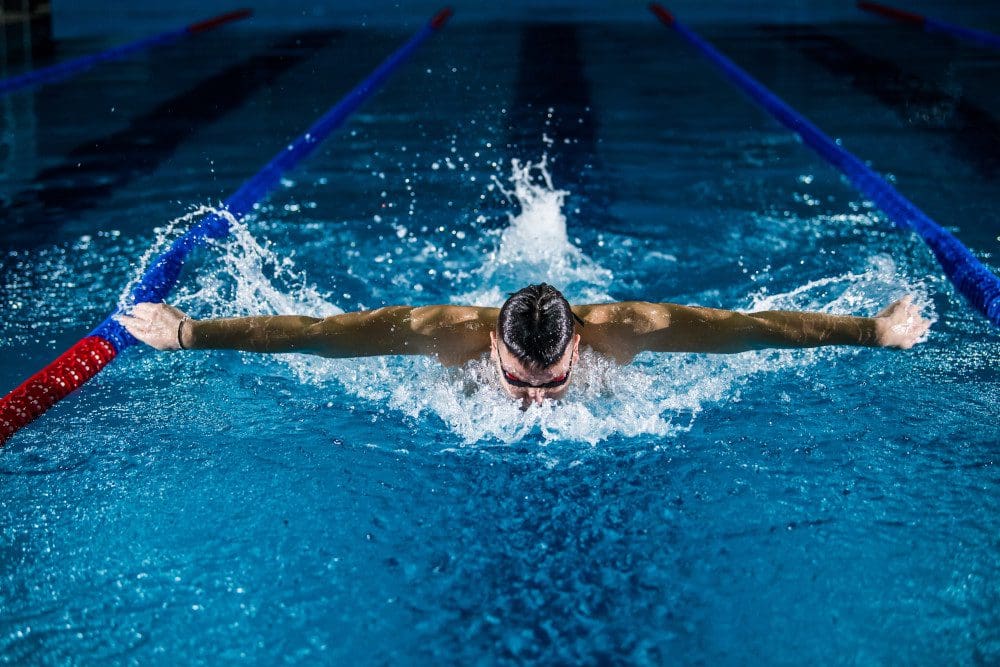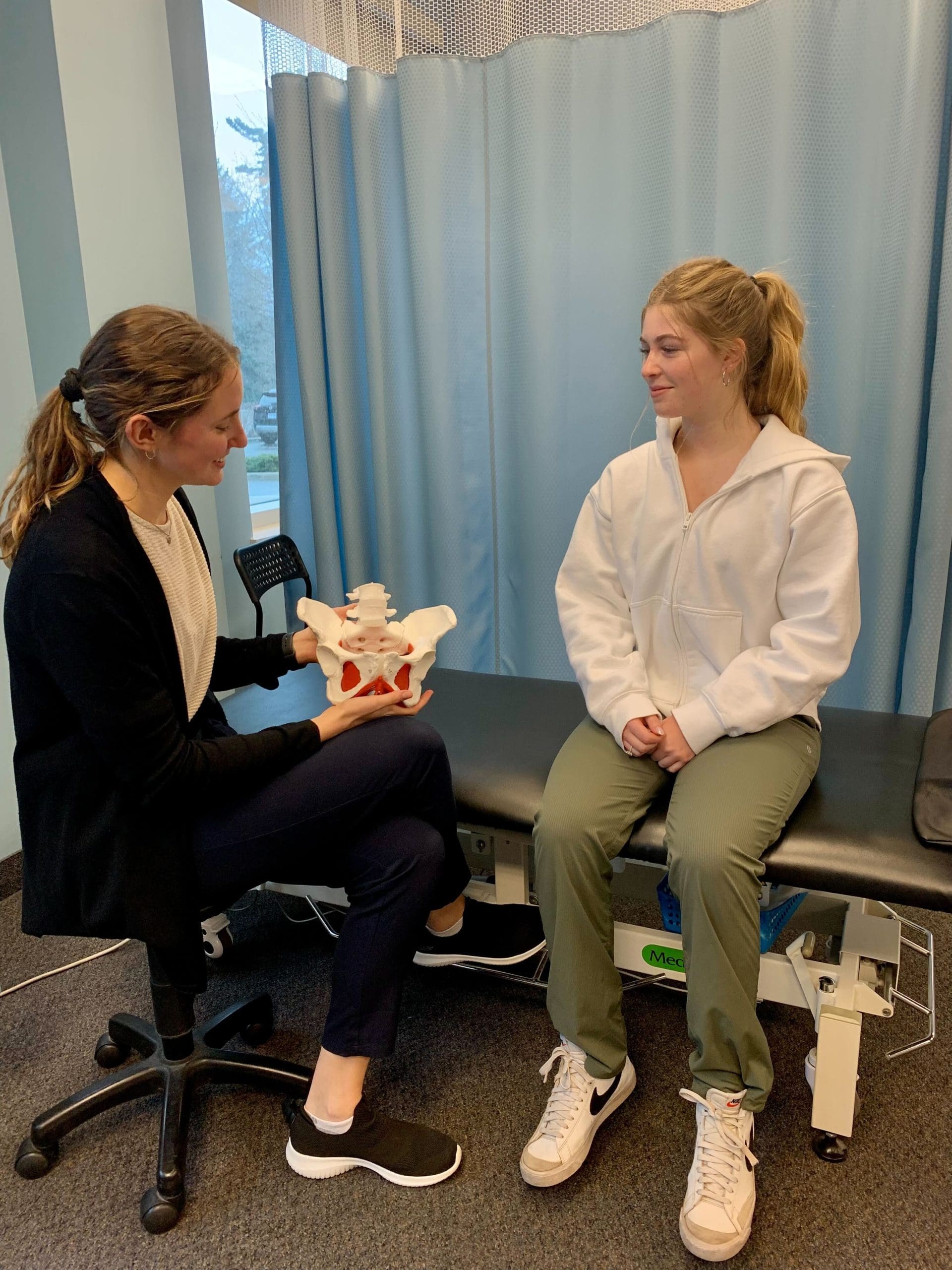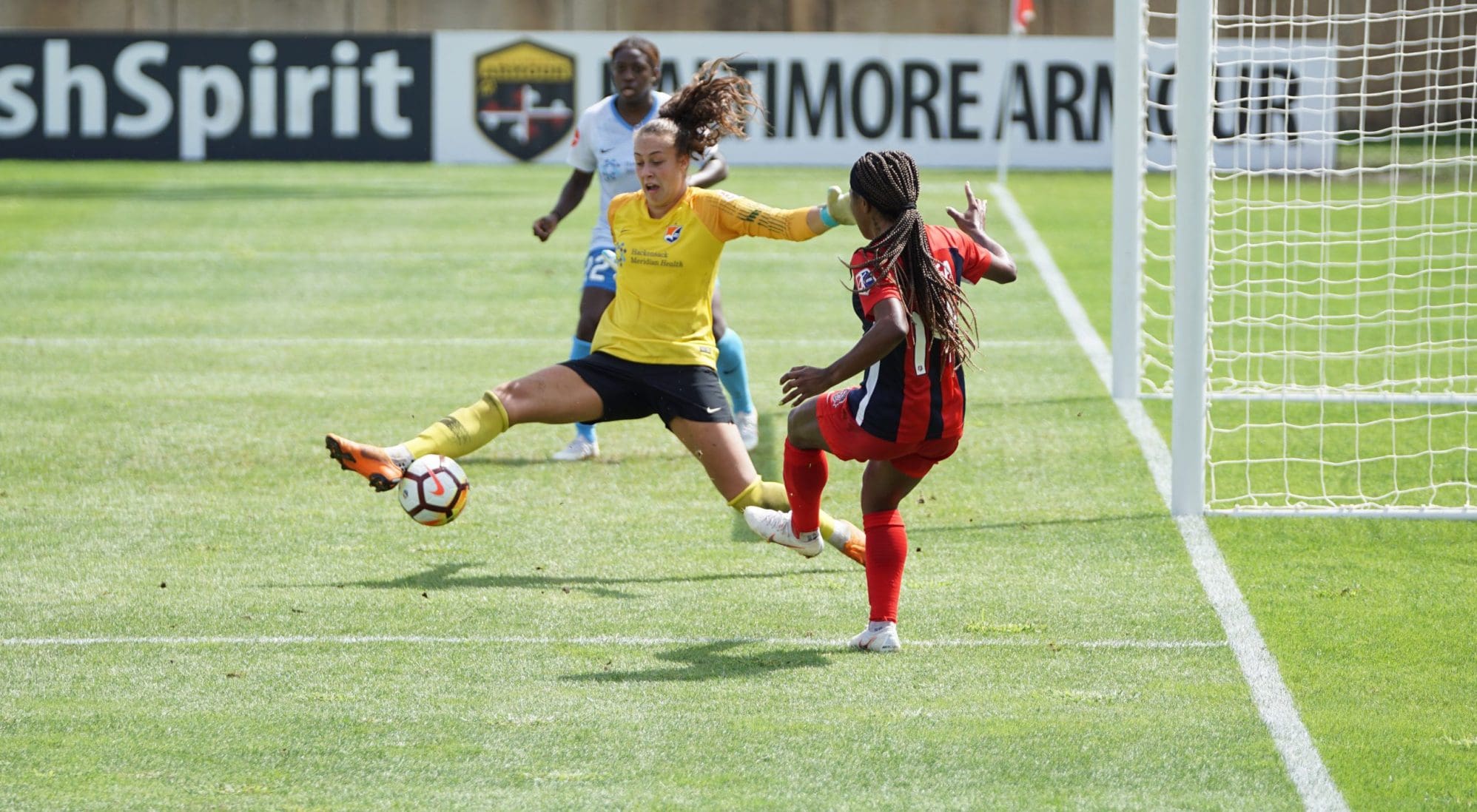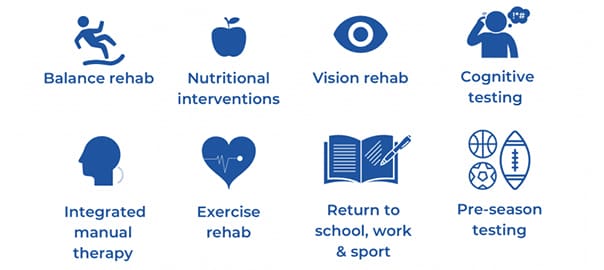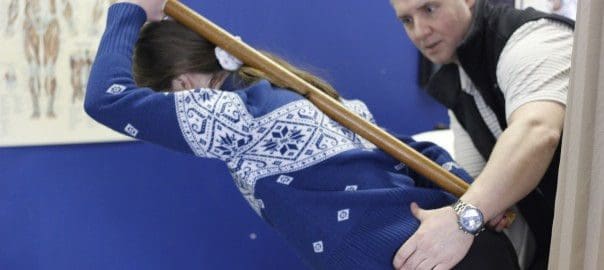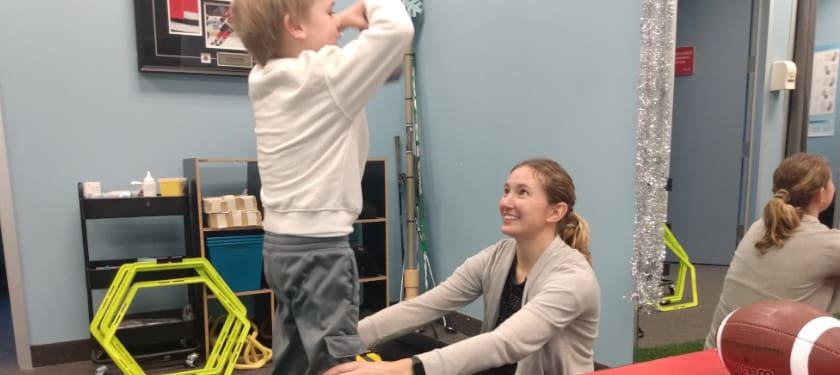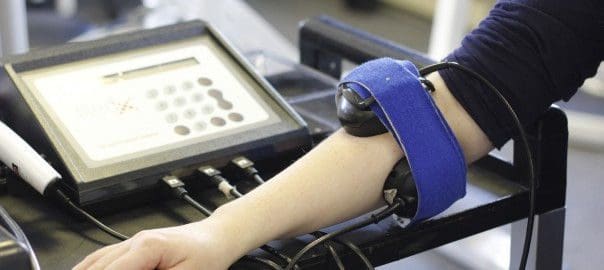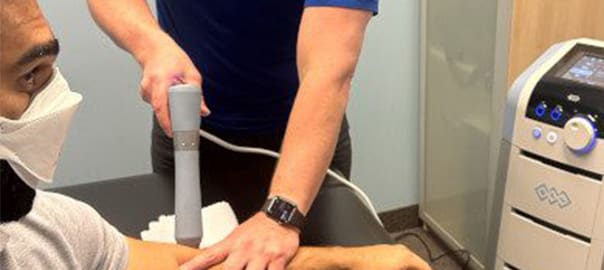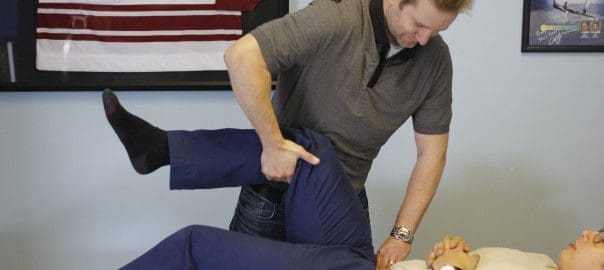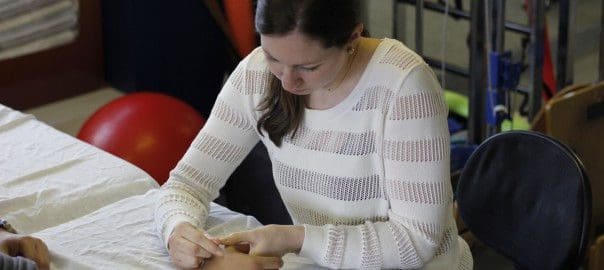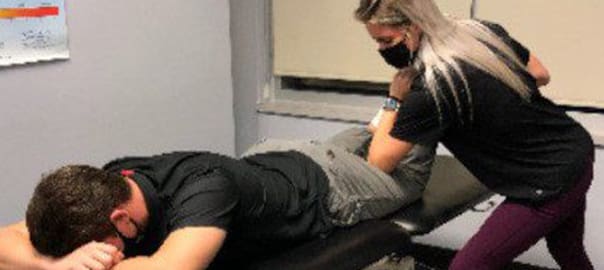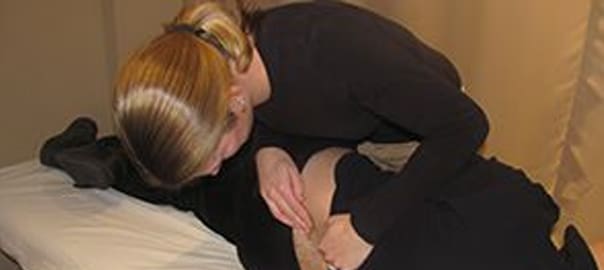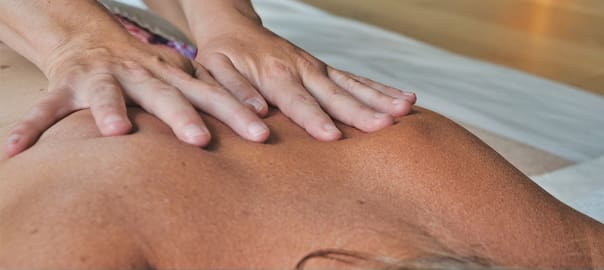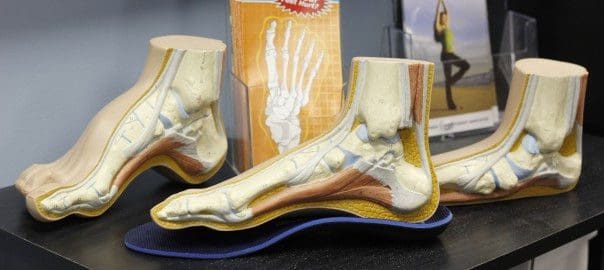Hamstring injuries have been reported as one of the most common injuries across a variety of sports that involve repetitive kicking and high speed running, such as soccer, track and field, football, and rugby. These injuries can have a significant impact on an athletes performance and can sideline them for weeks or months at a time. This article will examine hamstring injuries in soccer players, including their risk factors and prevention strategies for coaches, trainers and athletes to reduce the incidence and severity of these injuries.
Note: Sheddon’s physiotherapists from the Oakville and Burlington Physio Clinics are prepared and determined to help you get back to the sport you like.
Hamstring Injury Background
The hamstrings are a group of 3 muscles that play a vital role in everyday activities such as walking, running, and jumping. They function by extending the hip and bending the knee. The majority of injuries to the hamstrings are grade 1-2 strains that occur during activities that require rapid acceleration or deceleration, such as sprinting, cutting and kicking.
Hamstring injuries can range from a simple strain, where the muscle is stretched beyond its normal limits, to a partial tear or a complete rupture. Symptoms include pain, swelling, and bruising in the back of the thigh. In some cases a popping or snapping sensation may be felt at the time of injury.
What are the Risk Factors for a Hamstring Injury?
- Age
Unfortunately, the older you get, the higher your chance for hamstring injury.
- Decreased flexibility
Tight hamstrings aren’t the only problem; tight hip flexors and/or quads are also problematic.
- Muscle Imbalance/weakness
Hamstring strength alone is not an important risk factor for injury, but rather the balance between the quads and the hamstrings strength plays an important role in injury prevention. More specifically, athletes with significantly stronger quads vs. hamstrings, as commonly seen with athletes in kicking sports, were at a significantly higher risk of hamstring injury.
- Previous injury
Previous injury to the hamstring, groin and/or knee is one of the most commonly reported risk factors for a hamstring injury. Studies show that even a mild hamstring strain will put you at risk for further injury to the hamstring within the following 2 years.
- Improper Warm up
A poor warm up routine can increase the risk of injury.
- Fatigue
When the muscles are fatigued, they are more prone to injury. Athletes who over-train or do not get enough rest between training sessions are at a higher risk of hamstring injuries.
Hamstring Injury Prevention Strategies
Rehab your Injuries
Whether it’s your knee, groin, lower back or actual hamstring, you need to address the injury sooner than later in order to prevent long-term problems and re-injury. The high rate of re-injury can be related to decreased eccentric strength in the hamstring, tightness related to scar tissue and altered biomechanics.
Work on your core
While strengthening the hamstrings is important, you can’t forget about everything else that helps support, align and coordinate the hips. If there is an imbalance around the hip such as tight hip flexors, weak glutes, etc., the hamstrings will be more susceptible to injury.
Running Program
Most hamstring injuries occur later in the game when fatigue sets in. Therefore, you must ensure that your conditioning program focuses on interval speed training and endurance training to improve overall conditioning and to expose the muscles to high velocities to provide a training effect. Weekly sprint workouts have been shown to prevent hamstring injuries. Like all training loads, ensure the sprinting load (distance, reps and speed) is progressed gradually, and you want to work up to a load of 5-8 efforts at 85% of a players maximum sprint speed once a week.
Proper Warm-up
As with all injury prevention programs, warming up is key! Studies have shown that the FIFA 11 warm-up program reduces the risk of hamstring injury by 66% in soccer players. Click here to learn more about the FIFA 11 program.
Strengthening Programs
The majority of hamstring injuries occur during sprinting when the muscle is working eccentrically. As such, eccentric strengthening programs have been shown to decrease the risk of hamstring injury by 65-70%. The most popular and widely studied exercise for hamstring injury prevention is The Nordic Hamstring Exercise. Watch the video below to see a demonstration of the Nordic Exercise without a partner, it can also be completed with a partner holding your legs.
We strongly encourage all athletes to add the Nordic Hamstring Exercise to their strengthening regime. However, it shouldn’t be the only hamstring exercise you do. While it has been shown to decrease the risk of hamstring injury significantly, it only activates part of the hamstring muscles (specifically the semitendinosus and short head of the biceps femoris). 80% of hamstring injuries occur to the long head of the biceps femoris, which is better activated with a hip extension exercise such as deadlifts. The most effective hamstring injury prevention program should focus on targeting all the hamstring muscles with both knee and hip dominant movements. Strengthening exercises should be completed 2x/week. See a progressive 12 week schedule below:
Frequency 2x/week x 12 weeks.
Week 1-3: 3 sets of 5-6 reps
Week 4-6: 4 sets of 6-7 reps
Week 7-9: 4 sets of 8-9 reps
Week 10-12: 4 sets of 10-12 reps
Watch the video below for some great Hamstring Exercises that require little to no gym equipment.
If you currently are suffering from a hamstring injury it is best to book an appointment with a therapist and get on an individualized rehab plan. If you are currently injury free and would like to stay that way, then add some of the hamstring exercises from the video to your current strengthening program following the 12-week plan. If you want more bang for your buck, then make sure you use the FIFA 11 warm up, add one day of interval sprint training and add some core and hip stability exercises to your regular workout. If you still have questions or want more guidance on injury prevention book an appointment with one of the Sheddon Physiotherapy and Sports Medicine therapists at 905-849-4576 or BOOK HERE.
We are located only 6 min East of Oakville Place and 4 min East of Whole Foods Market on Cornwall Rd.
The Burlington physio clinic is located only 2 min south of IKEA Burlington and 6 min north of Burlington Golf & Country Club, on Plains Rd East.


